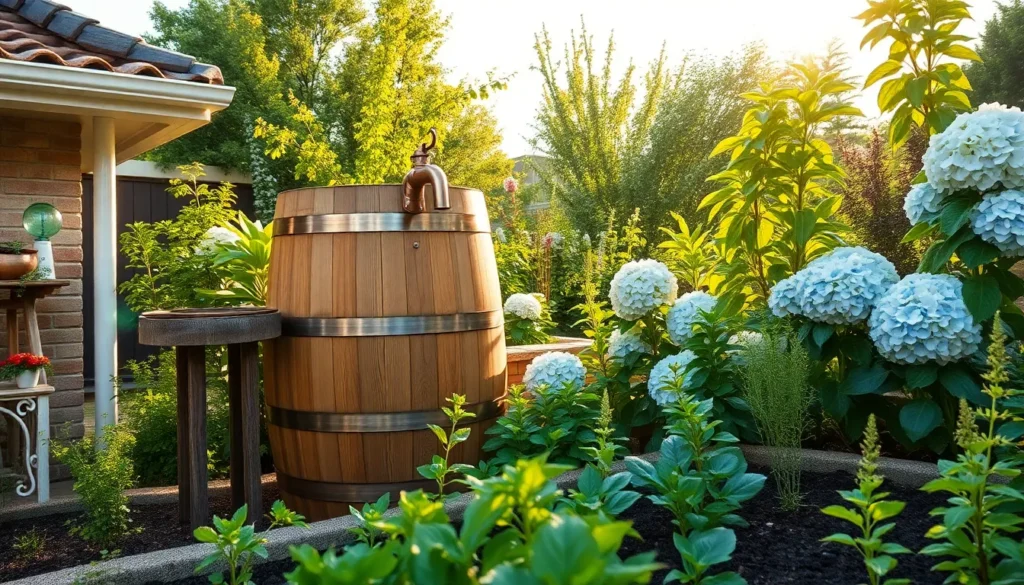Imagine transforming your garden into a thriving oasis that not only flourishes but also contributes to a more sustainable world. Whether you’re just starting your gardening journey or have years of experience nurturing plants, our guide, “15 Best Rainwater Harvesting For Gardens,” is here to help you tap into the wonders of nature’s bounty. This collection of designs and techniques is carefully curated to inspire and empower gardeners of all levels, offering innovative yet practical ways to capture and utilize rainwater efficiently.
From reducing your water bills to ensuring your plants receive the purest hydration, the benefits of rainwater harvesting are plentiful and rewarding. This guide will walk you through a variety of methods, providing you with the confidence to implement them in your own garden. Embrace the joy of gardening with these eco-friendly solutions and watch as your plants thrive like never before. As you delve into these techniques, you’ll find that sustainable gardening is not just a dream but a delightful reality within your reach.
Rain Barrels with Diverters (Efficient Water Collection)
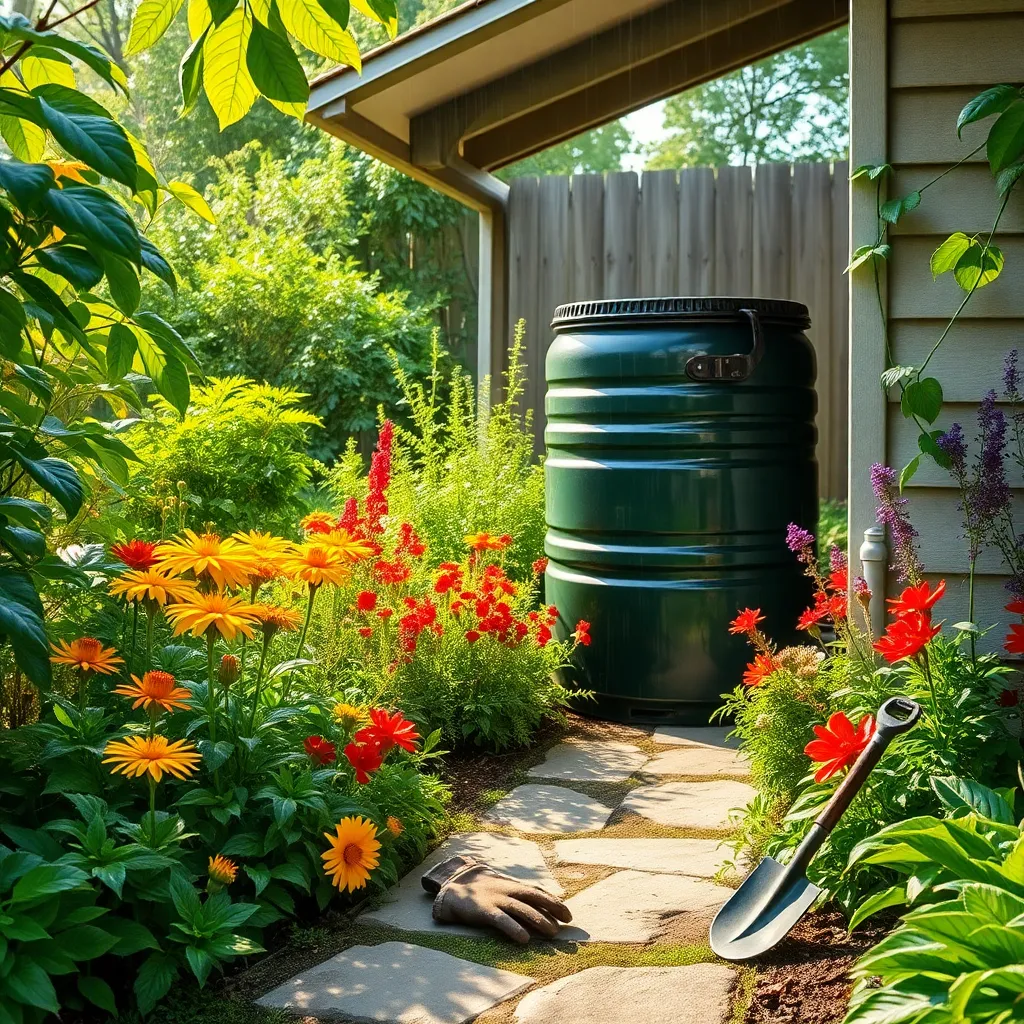
Rain barrels with diverters are an excellent choice for gardeners looking to maximize their water collection efficiently. These systems allow you to capture and store rainwater from your roof, making it readily available for periods of drought or for regular garden watering.
Installing a rain barrel with a diverter is straightforward, even for beginners. Choose a location close to a downspout, ensuring the barrel is elevated on a sturdy platform to facilitate easy access to the spigot.
Maintaining your rain barrel is crucial to ensure your water supply remains clean and usable. Regularly check for debris in the diverter and clean any leaves or twigs to prevent blockages and overflow.
For those with more advanced setups, consider connecting multiple barrels in a series to increase your storage capacity. This technique allows you to collect more water without taking up additional space, making it a smart choice for larger gardens.
Soaker Hoses (Direct Root Hydration)

Soaker hoses are an excellent choice for delivering direct root hydration in your garden. These hoses slowly release water along their length, ensuring that moisture penetrates deeply into the soil directly where plants need it most.
By laying soaker hoses on the soil surface, you can achieve more efficient watering while minimizing evaporation. This method is especially effective for vegetable gardens and densely planted flower beds, where consistent moisture is essential.
To maximize the efficiency of soaker hoses, cover them with mulch to help retain soil moisture and reduce temperature fluctuations. For best results, use a timer to automate watering schedules, ensuring your garden receives water at optimal times, such as early morning or late afternoon.
While soaker hoses provide a simple solution for garden irrigation, it’s crucial to frequently check for clogs and ensure even water distribution. Advanced gardeners might consider connecting soaker hoses to a rainwater harvesting system, further enhancing sustainability and reducing water bills.
Permeable Paving Stones (Natural Water Infiltration)
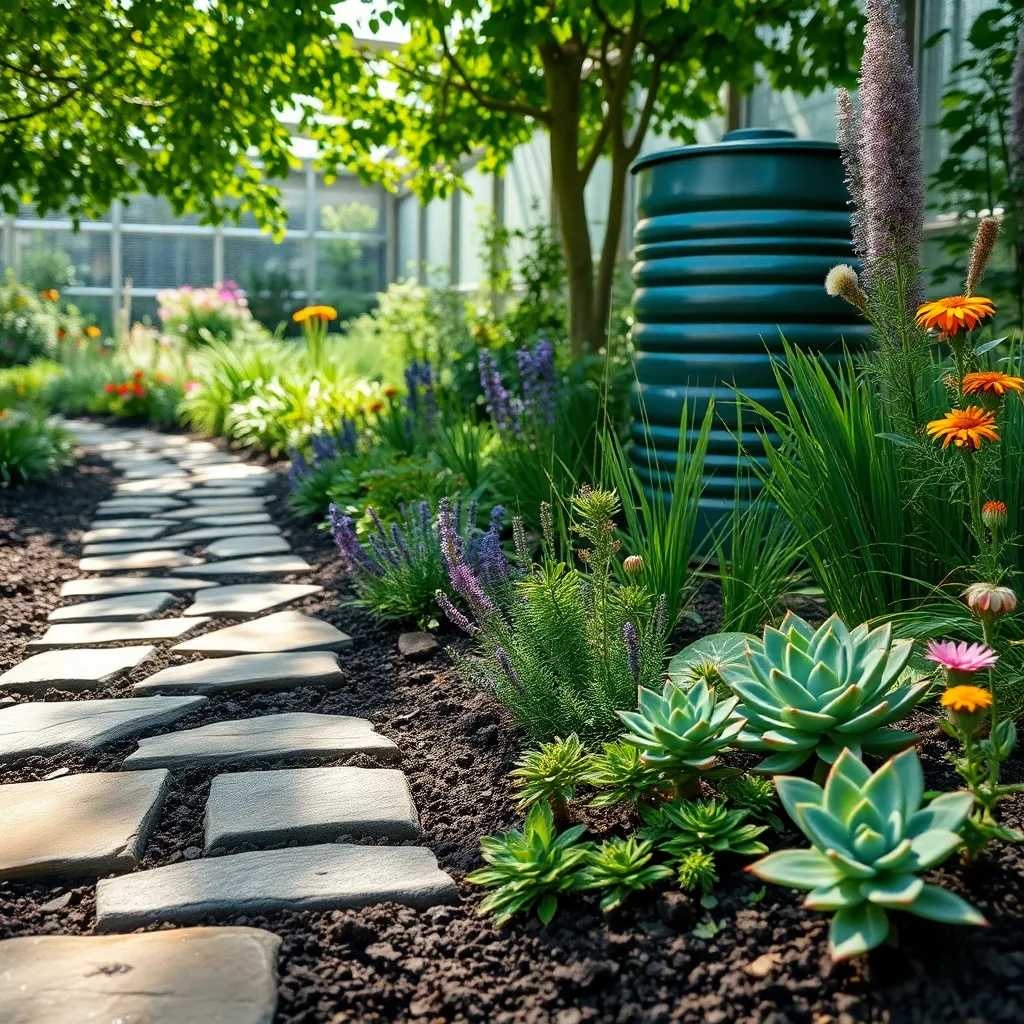
Permeable paving stones are an excellent way to enhance natural water infiltration in your garden. They allow rainwater to seep through the gaps, reducing runoff and helping maintain soil moisture levels.
To maximize their effectiveness, choose stones that are specifically designed for permeability, such as those with larger gaps or porous surfaces. Ensure the base material is also permeable, using layers of sand or gravel to aid in water drainage.
Consider using these stones in pathways or patio areas where water collection is beneficial. Not only do they support rainwater harvesting, but they also improve the overall aesthetic of your garden.
For beginners, start by installing a small area of permeable paving stones to observe how they affect your garden’s water management. Advanced gardeners can integrate these stones with rain gardens or swales for an even more effective water conservation strategy.
Rain Chains (Decorative Water Guidance)
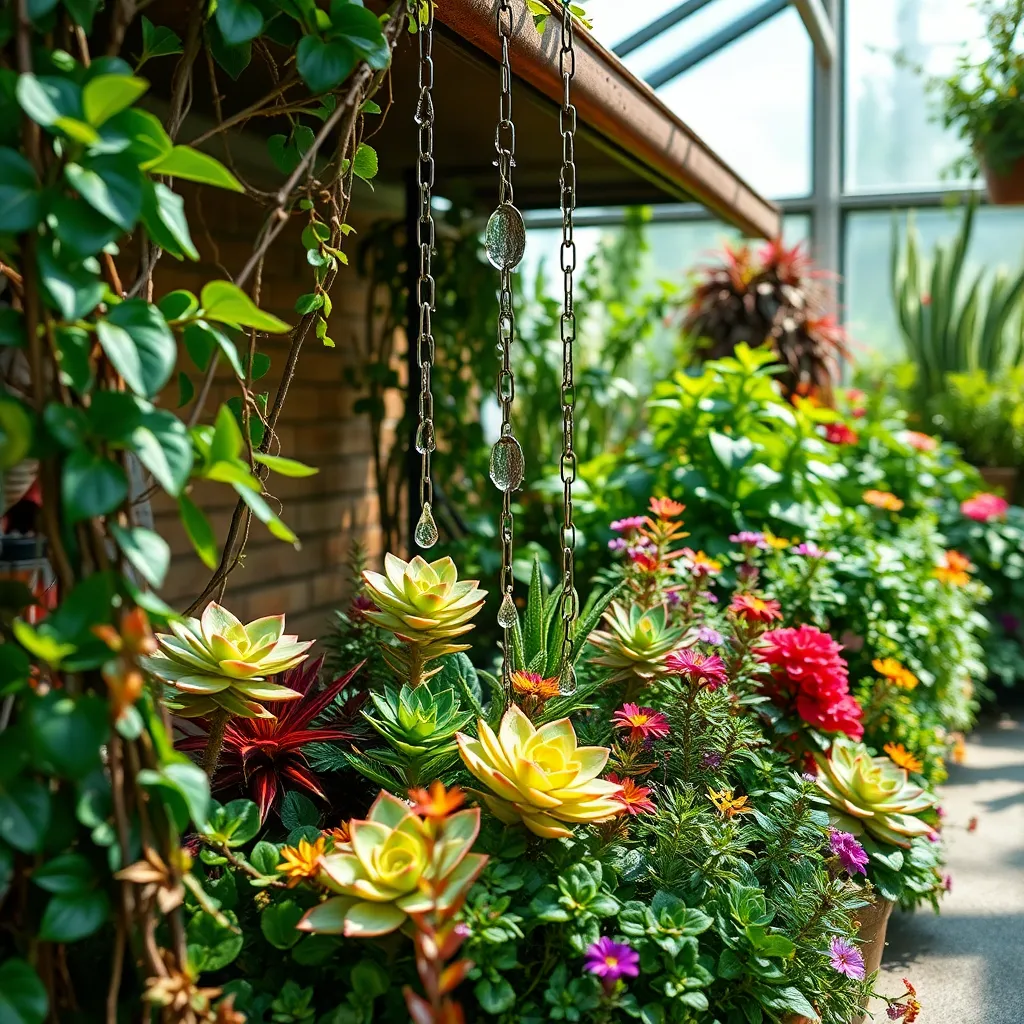
Rain chains are a beautiful and functional addition to any garden, offering a decorative way to guide rainwater from your roof to the ground. By replacing traditional downspouts, they not only enhance aesthetic appeal but also help direct rainwater to specific areas for harvesting or drainage.
Installing a rain chain is straightforward, making it accessible for gardeners of all skill levels. Start by removing an existing downspout and attaching the rain chain to your gutter with a simple hook or bracket.
For optimal results, ensure the rain chain is positioned above a rain barrel or a catchment basin to collect the water effectively. Alternatively, you can guide the water into a garden bed, where it will naturally infiltrate the soil, providing much-needed moisture to your plants.
To maximize the efficiency of your rain chain, consider pairing it with a splash block or a decorative basin at the base. This will help to prevent soil erosion and distribute water more evenly across your garden area.
Mulch Layers (Moisture Retention and Soil Health)
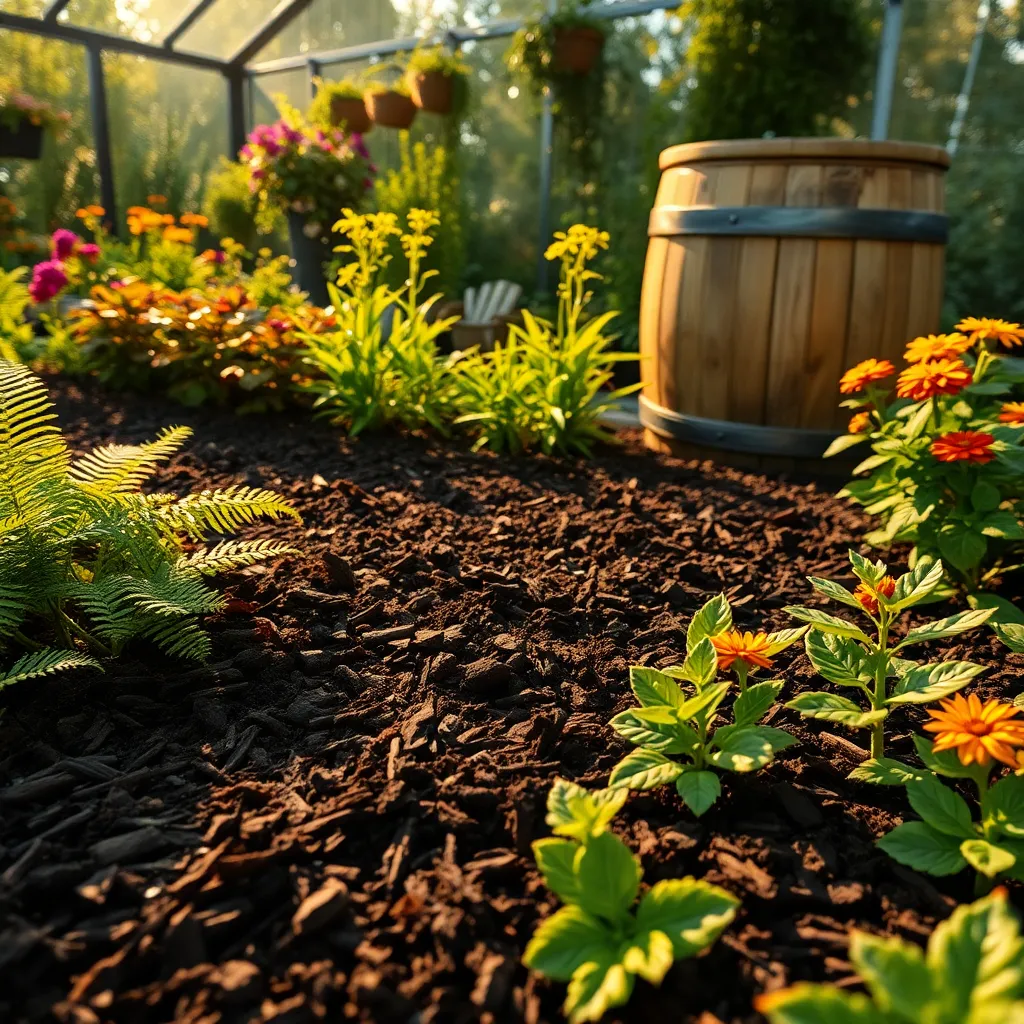
Mulch is a gardener’s best friend when it comes to retaining moisture and enhancing soil health. Start by applying a 2- to 3-inch layer of organic mulch, such as shredded leaves or bark, around your plants to help keep the soil cool and reduce evaporation.
Using mulch not only conserves water but also helps suppress weeds that compete with your plants for nutrients. As the mulch breaks down, it enriches the soil with organic matter, improving its texture and fertility over time.
For beginners, choose readily available mulches like straw or grass clippings, ensuring they are free of seeds and chemicals. Advanced gardeners might consider composted wood chips, which provide a slow-release source of nutrients and support beneficial soil microbes.
To maximize the benefits, make sure to replenish mulch as it decomposes, maintaining the recommended depth. Keeping mulch away from the stems of plants will prevent rot and pest infestations, ensuring your garden remains healthy and vibrant.
Bioswales (Landscaped Drainage Channels)
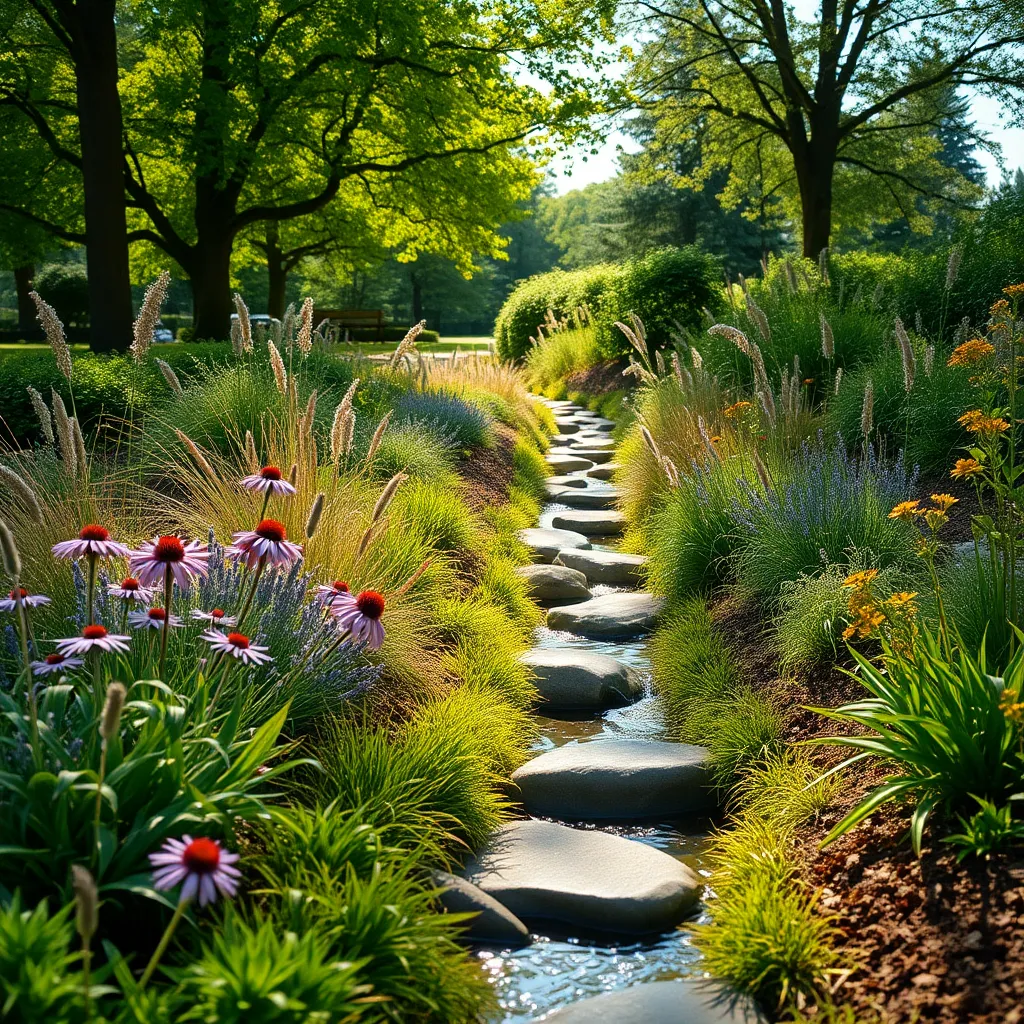
Bioswales, often referred to as landscaped drainage channels, serve as a sustainable solution for managing rainwater in your garden. These channels are strategically designed to redirect excess water, reducing runoff and preventing erosion while enhancing the garden’s aesthetic appeal.
Creating a bioswale involves selecting appropriate plants that thrive in both wet and dry conditions, such as sedges or native grasses. It’s important to use a well-draining soil mix, typically a combination of sand, compost, and topsoil, to ensure optimal water absorption and filtration.
For beginners, starting with a small bioswale can be a manageable project that offers significant benefits. Ensure the bioswale is positioned at a low point in your garden where water naturally collects, and consider adding a layer of mulch to retain moisture and suppress weed growth.
Experienced gardeners might experiment with incorporating decorative stones or rocks to enhance the bioswale’s functionality and appearance. Regular maintenance, such as occasional weeding and replanting where necessary, will keep your bioswale effective and visually appealing.
French Drains (Subsurface Water Redirection)
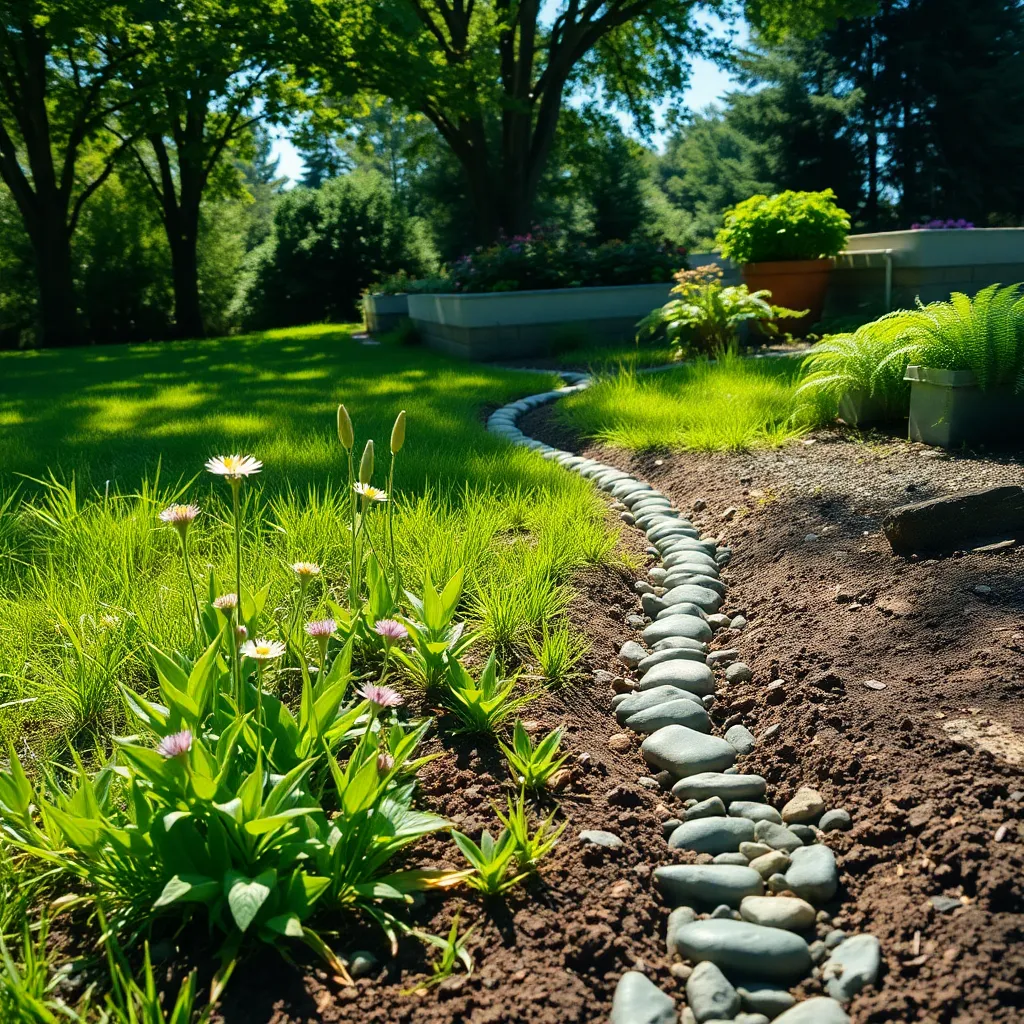
French drains are an effective method for redirecting subsurface water away from areas where it could potentially damage your garden. By installing a trench filled with gravel and a perforated pipe, you can efficiently manage water flow and prevent soil erosion.
To set up a French drain, start by digging a trench in the desired location, ensuring it has a slight slope for optimal drainage. Line the trench with landscape fabric to prevent soil from clogging the pipe, then fill it with gravel to aid water movement.
It’s important to choose the right type of gravel for your French drain to ensure proper water filtration. Use clean, washed gravel with a size of about 0.5 to 1 inch, which provides excellent water passage while preventing soil particles from entering the pipe.
For ongoing maintenance, periodically check the drain to ensure it remains free from obstructions. This simple check will help keep your garden healthy by ensuring excess water is efficiently redirected away from your plants.
Automatic Rainwater Timers (Scheduled Irrigation)

Automatic rainwater timers can significantly enhance your garden’s irrigation efficiency by scheduling water delivery based on your plants’ needs. These devices connect to your rainwater storage system and release water at predetermined intervals, ensuring consistent hydration even during dry spells.
Setting up an automatic timer is straightforward, making it perfect for both beginners and seasoned gardeners. By adjusting the schedule according to the season, you can ensure your plants receive the optimal amount of water without wasting resources.
For best results, consider using a timer with a moisture sensor to tailor watering schedules based on soil conditions. This advanced feature can help prevent overwatering, which is a common issue that can lead to root rot and other plant diseases.
It’s crucial to position your rainwater collection system near the garden to minimize the distance water must travel, reducing potential pressure loss. Choose a timer that allows for multiple programs if you have different zones in your garden with varying water needs.
Rain Garden Plants (Native, Water-Absorbing Flora)
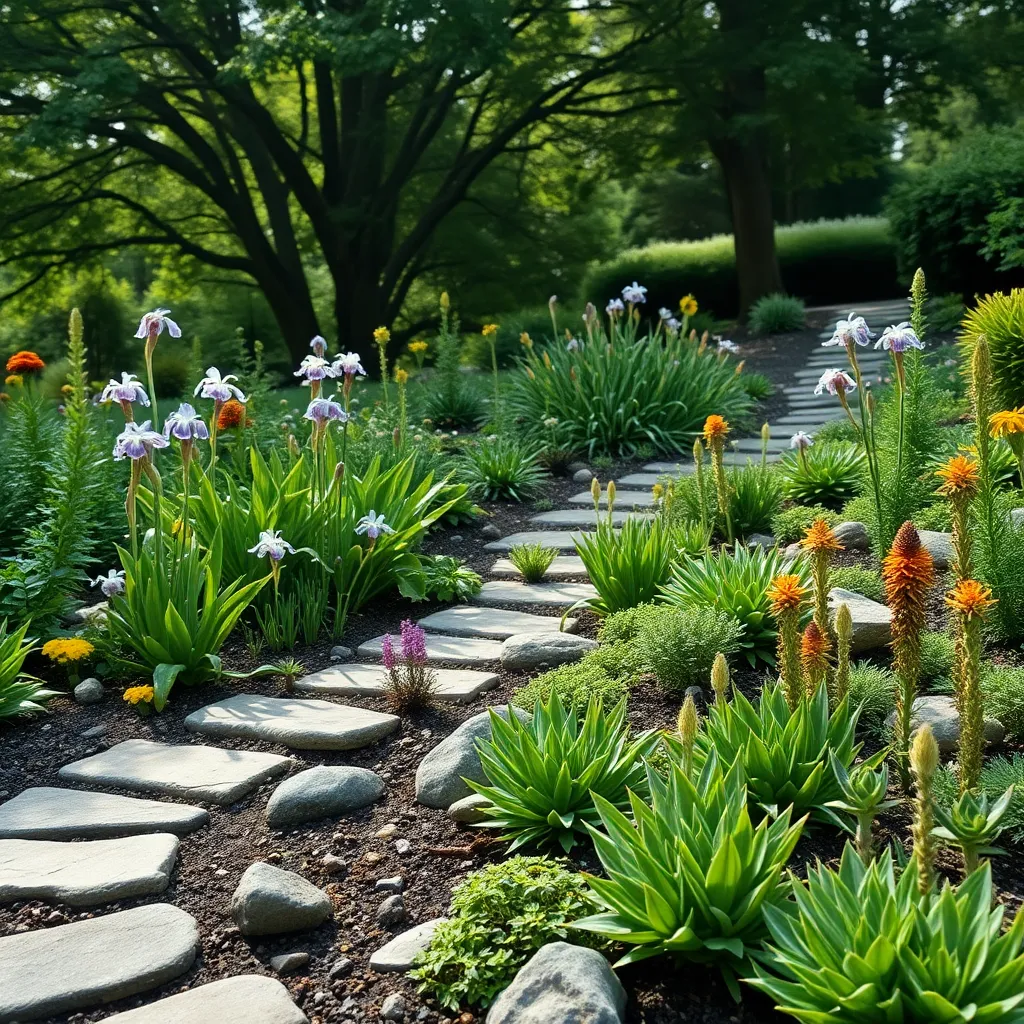
Creating a rain garden with native, water-absorbing plants is a fantastic way to manage runoff and support local ecosystems. Begin by selecting plants that naturally thrive in your region’s climate and soil conditions, ensuring they can withstand both wet and dry periods.
One essential tip for rain garden success is to focus on soil preparation. Amend the soil with organic matter to improve drainage and water retention, creating an ideal environment for your chosen plants.
For beginners, consider starting with hardy species like Joe-Pye weed, swamp milkweed, and blue flag iris, which are known for their resilience and water absorption abilities. These plants not only soak up excess rainwater but also attract beneficial pollinators to your garden.
Advanced gardeners might explore integrating layers of vegetation to enhance biodiversity and water absorption. Experiment with combinations of trees, shrubs, and perennials that mimic natural wetland ecosystems, providing shelter and food for various wildlife species.
To ensure your rain garden flourishes, regular maintenance is key. Prune plants as needed to promote healthy growth, and inspect for any clogs or erosion in your garden’s design to maintain optimal water flow and absorption.
Gravity-Fed Irrigation Systems (Energy-Free Water Delivery)
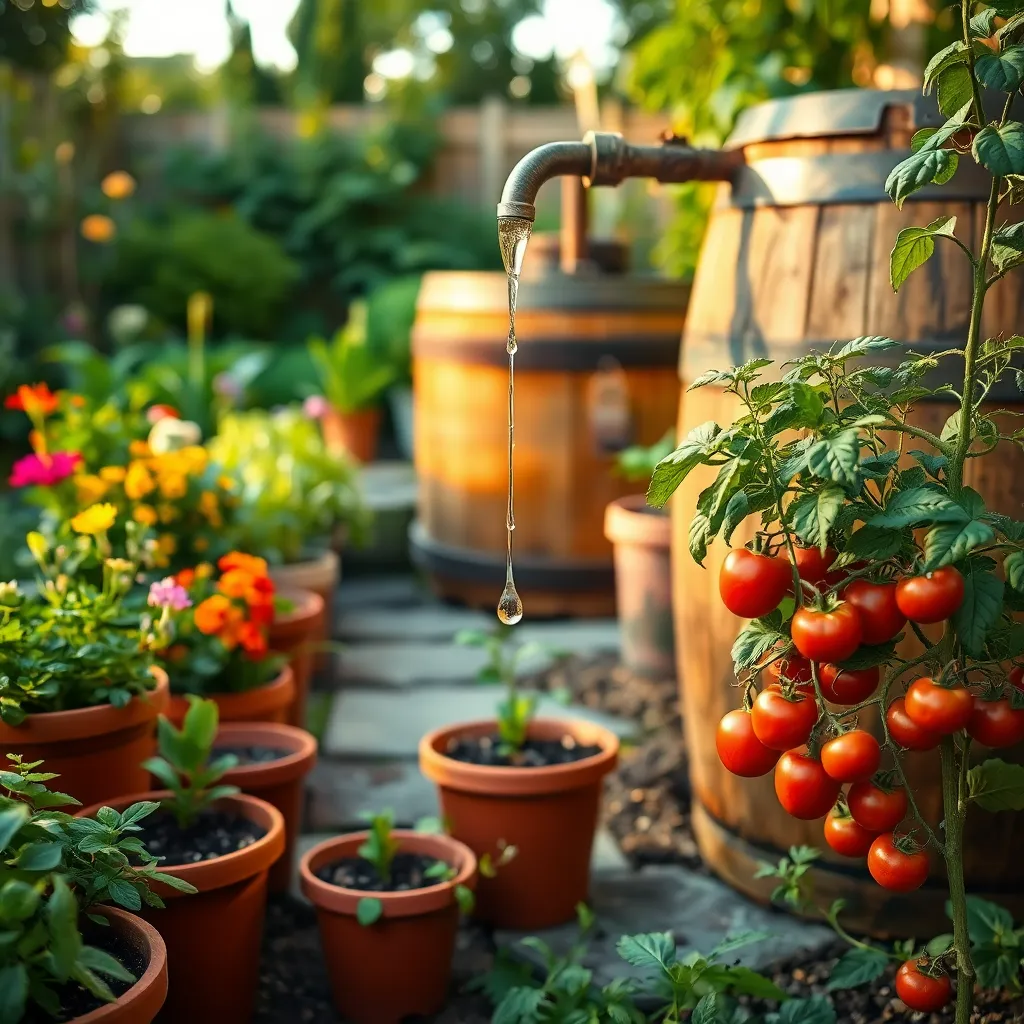
Gravity-fed irrigation systems offer a simple yet effective way to distribute water throughout your garden without using any energy. These systems rely on the natural force of gravity to move water from a higher point, such as a rain barrel, to your garden beds below.
To set up a gravity-fed system, elevate your water source at least a few feet above the area you wish to irrigate. This elevation difference allows water to flow naturally through hoses or drip lines, providing a consistent moisture level to your plants.
It’s vital to use hoses or pipes that are designed for low-pressure systems to ensure efficient water delivery. Install a filter at the water source to prevent debris from clogging the lines and hindering water flow.
For gardeners looking to optimize their system, consider incorporating a timer to regulate water delivery, especially during dry spells. This approach can help maintain soil moisture levels, reducing the need for manual watering and conserving water.
Gutter Filters (Debris-Free Rainwater Collection)

Gutter filters are an essential component of a debris-free rainwater collection system. They help keep your rainwater harvesting setup efficient by preventing leaves and other debris from clogging your gutters, ensuring a clean water supply for your garden.
Installing a gutter filter is a straightforward process that can be done by most homeowners. Simply attach the filter to the top of your gutter system, ensuring it fits snugly and covers the entire opening to effectively block debris.
For those new to gardening, it’s crucial to maintain your gutter filters regularly. Check them monthly, especially during fall, to remove any accumulated debris, ensuring your rainwater remains clean and free-flowing.
Advanced gardeners might consider investing in self-cleaning or mesh gutter filters for minimal maintenance and enhanced efficiency. These filters can reduce the frequency of manual cleaning and provide peace of mind that your water collection system remains unobstructed.
Green Roofs (Rainwater Absorption and Insulation)
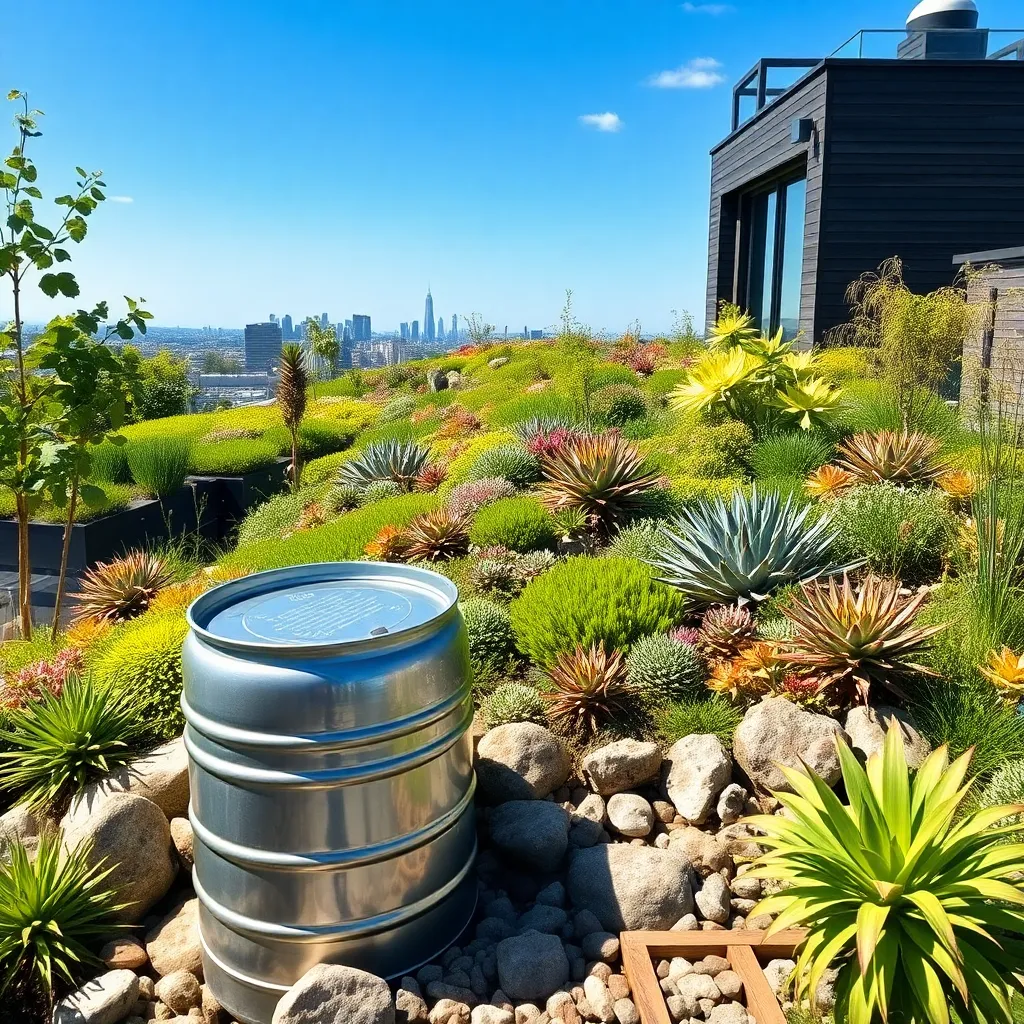
Green roofs offer a dual advantage by not only adding beauty to your home but also effectively absorbing rainwater. They act as a natural insulation layer, helping to regulate the temperature inside your house throughout the year.
To establish a green roof, start by ensuring your structure can support the additional weight of soil and plants. Consider consulting with an architect or structural engineer to determine the suitability of your roof for this purpose.
Selecting the right plants is crucial for a successful green roof, with drought-tolerant species like sedums and native grasses often being ideal. These plants require minimal maintenance and are adept at thriving in shallow soil conditions with limited water.
For optimal growth, use a lightweight soil mix designed specifically for green roofing. This typically includes a combination of compost, perlite, and expanded clay to ensure adequate drainage and aeration.
Watering frequency should be adjusted based on rainfall and season, with newly established green roofs needing more frequent watering until the plants are well-rooted. Install a drip irrigation system if manual watering is challenging, especially during dry spells.
Cisterns for Rainwater Storage (Large-Volume Solutions)
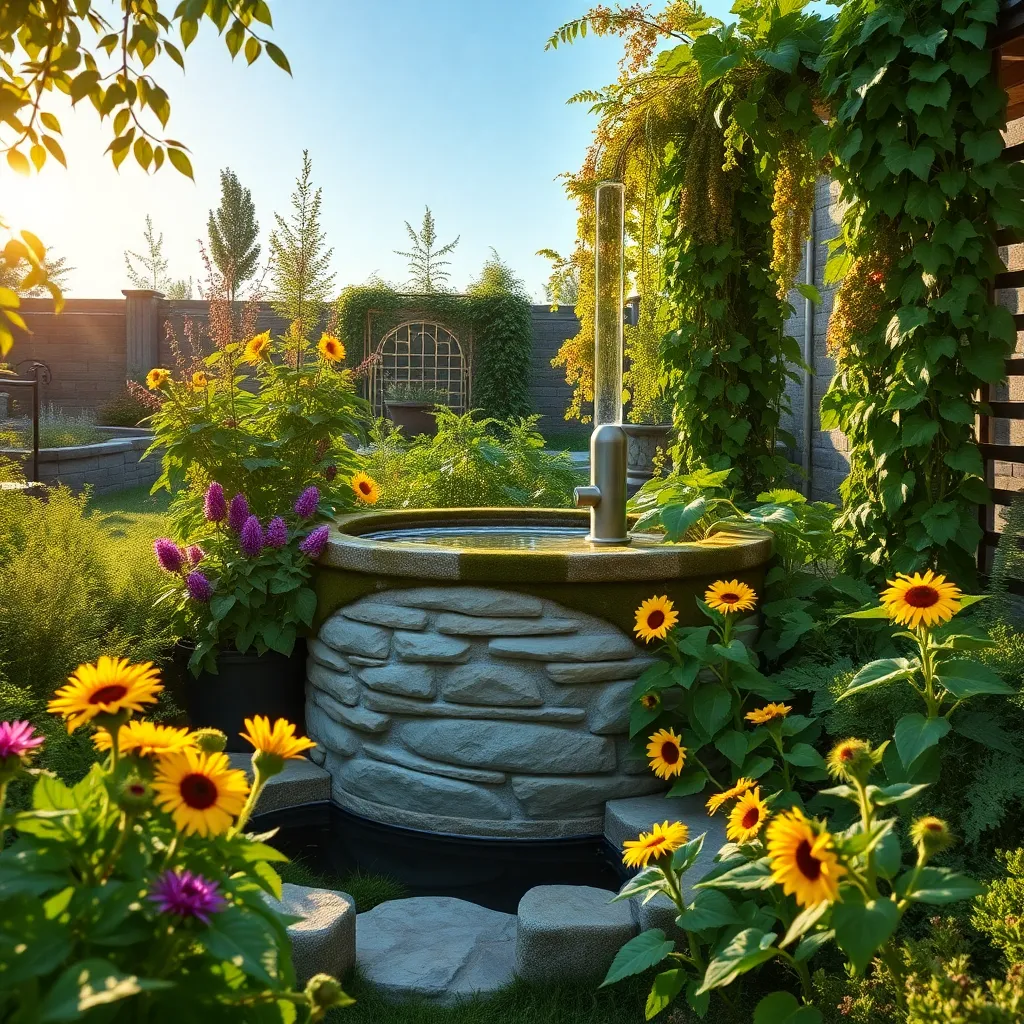
Cisterns are an excellent solution for gardeners looking to harvest large volumes of rainwater. These storage systems can significantly reduce your dependency on municipal water and are perfect for sustaining your garden during dry spells.
When selecting a cistern, consider materials like concrete, fiberglass, or polyethylene, as they offer durability and ease of maintenance. Placement is crucial; position your cistern where it can easily collect runoff from your roof while being accessible for garden use.
To maximize efficiency, integrate a first-flush diverter to keep debris out and maintain water quality. Regularly check and clean your cistern to prevent algae growth and ensure the water remains suitable for your plants.
Advanced gardeners might consider linking multiple cisterns for even greater storage capacity. This setup can support larger gardens or allow for more extensive landscaping projects, providing a sustainable water source throughout the growing season.
Wicking Beds (Sub-Irrigated Planters)
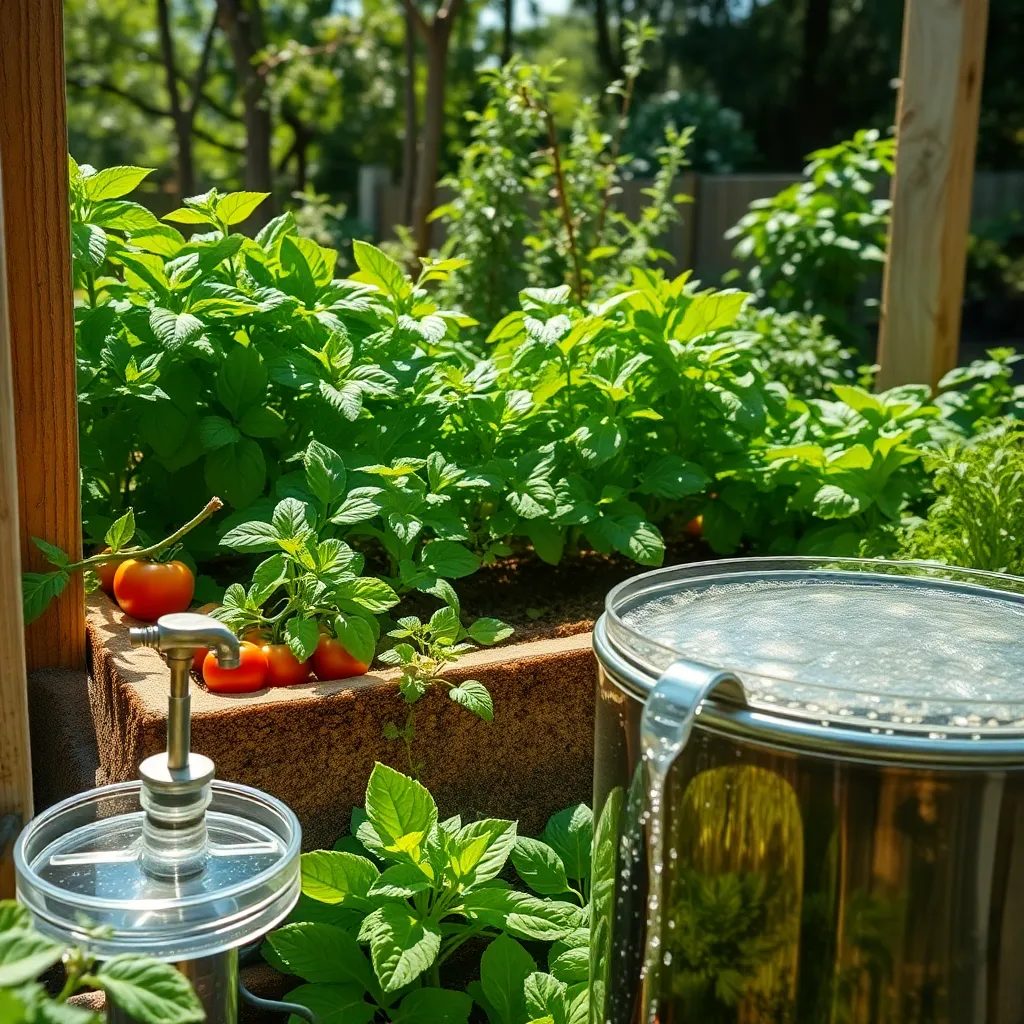
Wicking beds, also known as sub-irrigated planters, are an excellent way to efficiently manage water in your garden. By using a reservoir system, these beds allow plants to draw up water as needed, making them ideal for dry climates or busy gardeners.
To set up a wicking bed, start by creating a water reservoir at the base using materials like gravel or sand. Above the reservoir, a layer of high-quality soil mixed with organic matter provides ideal growing conditions for a variety of plants.
Selecting the right plants is crucial for maximizing the benefits of a wicking bed. Vegetables like tomatoes, peppers, and leafy greens thrive in these systems due to the consistent moisture levels.
For beginners, it’s important to monitor the water levels regularly, especially during the initial weeks. More experienced gardeners might consider integrating a float valve system to automate water refilling, ensuring optimal moisture without daily checks.
Rainwater Diverting Downspouts (Selectively Channel Water)
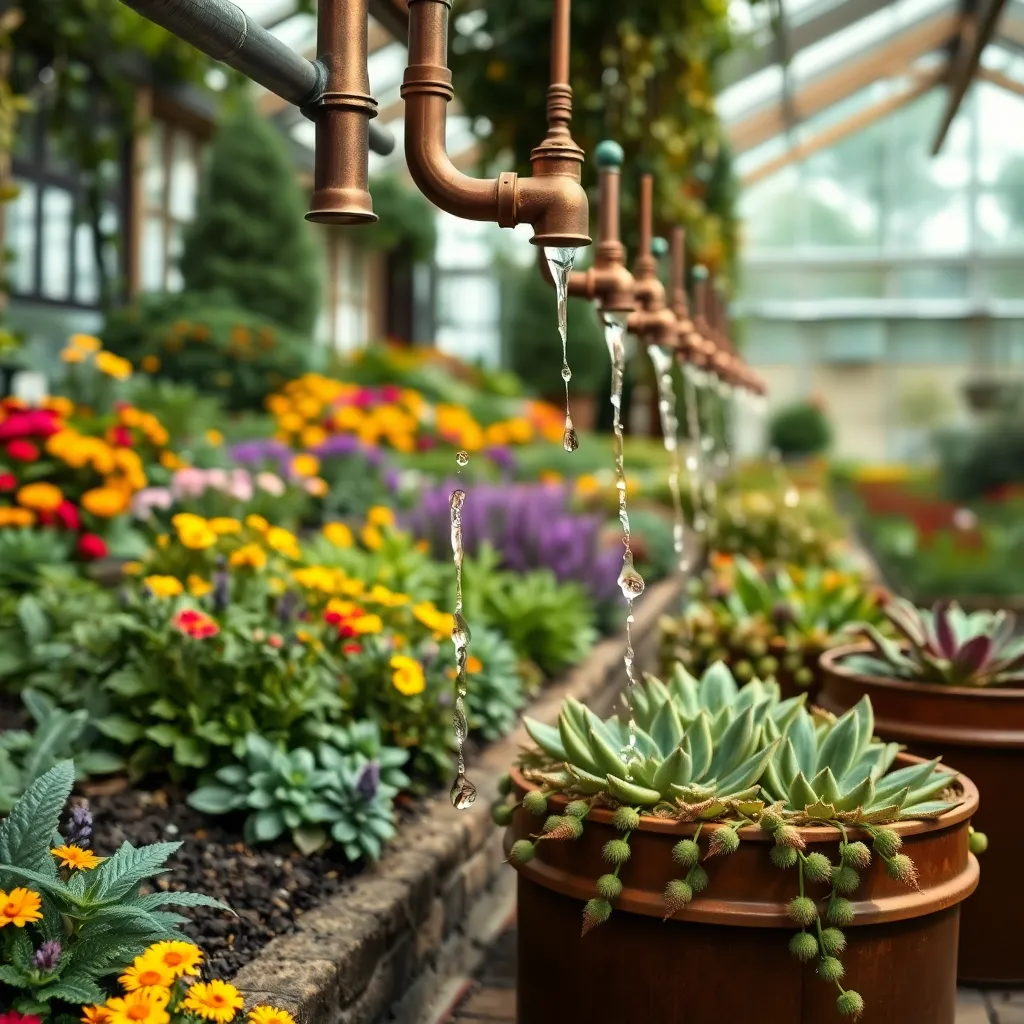
Rainwater diverting downspouts offer an effective way to channel excess water to specific areas of your garden. By attaching a diverter to your existing downspout, you can direct water to areas that need more moisture, such as a vegetable patch or a flower bed.
To make the most out of this system, ensure the downspout diverter is installed at the correct angle to efficiently redirect water. Positioning is crucial; aim to place the outlet where it can reach the garden area without causing erosion or waterlogging.
For beginners, it’s important to use durable materials that withstand various weather conditions—PVC pipes or flexible hoses are excellent choices. Advanced gardeners might consider incorporating a soaker hose at the end of the diverter to evenly distribute water along a row of plants.
Regular maintenance of your diverters is essential to keep them working efficiently. Check for clogs and clear debris regularly, especially after heavy rains, to ensure a steady flow of water to your desired garden areas.
Conclusion: Growing Success with These Plants
In exploring the ’15 Best Rainwater Harvesting For Gardens,’ we’ve uncovered an array of relationship-enhancing strategies that mirror the nurturing essence of rainwater nurturing a garden. From understanding the importance of communication and trust, to nurturing growth through patience and empathy, each concept serves as a vital drop in the reservoir of a thriving relationship. We’ve also highlighted the importance of shared responsibilities, adaptability, and mutual respect, alongside the joy of shared hobbies and quality time, which foster deeper connections. Each strategy is designed to enrich your relational soil, ensuring that love and companionship flourish.
As a next step, choose one concept to focus on this week—perhaps scheduling a regular date night or practicing active listening. Small, consistent actions lead to long-lasting results. Bookmark this article to revisit these insights whenever you need a refresher or a boost in your relational journey.
Remember, relationship success is not about perfection but progress. By nurturing these concepts, you’re paving the way for a resilient partnership that will thrive through any season. Save this article now, and let it be your guiding light toward a fulfilling and enduring relationship.

